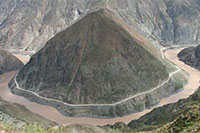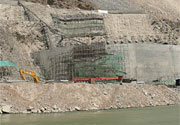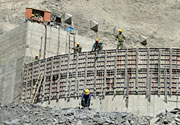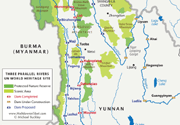Known as the drichu (Tibetan), chang jiang (Chinese), or jinsha jiang (Chinese for the upper Yangtse), the Yangtse rises in the Tanggula mountain range in Amdo at around 5000 metres, and flows for 6,300km to China's east coast near Shanghai. Except that these days, the river may fail to reach the sea.
BAIHETAN DAM
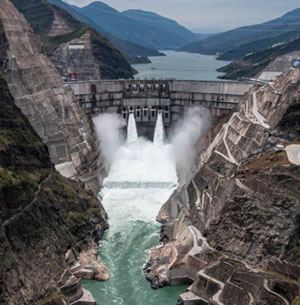
In the photo you can see the monster Baihetan dam, currently starting operation on the upper Yangtse in 2021. At 289m in wall height and 16 GW in capacity, it is the second largest dam in the world, after the Three Gorges Dam, which lies further along the same river. Baihetan uses turbines that output 1GW of power each, so 16 of these massive turbines will generate 16GW of power. A turbine that size is new technology, never before seen, and made in China. In 1930, the biggest dam in the world, Hoover Dam in the USA, generated 2 GW output. That output is now done with just two turbines at Baihetan Dam on the Yangtse.
Large dams on upper reaches
Dams on the Yangtse are mostly constructed by the Three Gorges Project Corporation, responsible for the building of the colossal Three Gorges Dam and Xiluodu Dam. Where to start on the Yangtse? There are so many large dams under construction or on the drawing board that you have to wonder how anything—or anybody—will survive along this river. Here's a shortlist of large dams slated to be built on the upper reaches of the Yangtse, on or near the Tibetan plateau: Hutiaoxia, 216 metres in wall height; Liangjiaren, 100m; Liyuan 155m; Ahai, 139m; Jinganqiao, 156m; Longkaikou, 113m, Ludila, 120m; and Guanyingyan, 183m wall height. You can see some of these dams marked on the Three Parallel Rivers map below.
Read more about gargantuan Xiluodu Dam on the central reaches of the Yangtse »
